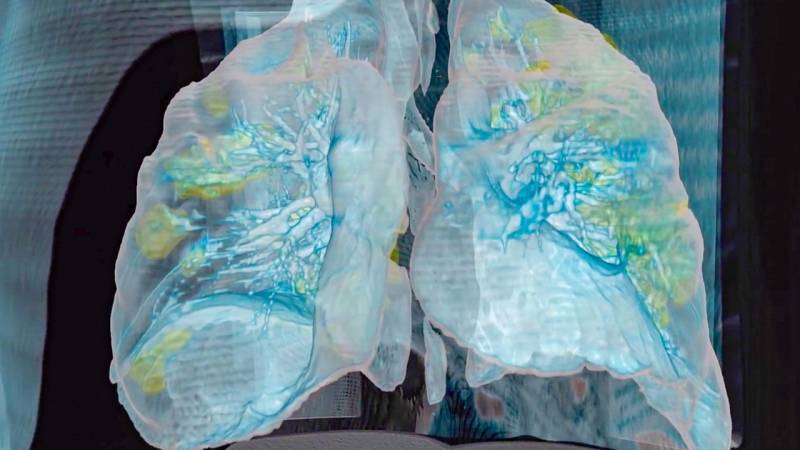
According to a report titled "How does coronavirus kill? Clinicians trace a ferocious rampage through the body, from brain to toes" published in ScienceMag (April 17), clinicians and pathologists are struggling to understand the damage wrought by the coronavirus as it tears through the body. They are realizing that although the lungs are ground zero, its reach can extend to many organs including the heart and blood vessels, kidneys, and brain.
"This map of the devastation that COVID-19 can inflict on the body is still just a sketch. It will take years of painstaking research to sharpen the picture of its reach, and the cascade of cardiovascular and immune effects it might set in motion, as science races ahead."
We need to keep a very open mind as this phenomenon goes forward,” says Nancy Reau, a liver transplant physician who has been treating COVID-19 patients at Rush University Medical Center. “We are still learning,” he reiterated and cautioned against any rushed conclusions.
Some COVID-19 patients recover, sometimes with no more support than oxygen breathed in through nasal prongs.
Meanwhile, other scientists are zeroing in on an entirely different organ system that they say is driving some patients’ rapid deterioration: the heart and blood vessels.
Last month, Sherry Chou, a neurologist at the University of Pittsburgh Medical Center, began to organize a worldwide consortium that now includes 50 centers hoping to gather scans, lab tests, and other data to better understand the virus’ impact on the nervous system, including the brain.
"In Brescia, Italy, a 53-year-old woman walked into the emergency room of her local hospital with all the classic symptoms of a heart attack. But when doctors injected dye in the coronary arteries, looking for the blockage that signifies a heart attack, they found none. Another test revealed why: The woman had COVID-19."
“The more we look, the more likely it becomes that blood clots are a major player in the disease severity and mortality from COVID-19,” says Behnood Bikdeli, a cardiovascular medicine fellow at Columbia University Medical Center. A neuroscientist at the Chinese Academy of Sciences Hongbo Jia states: "Those with acute kidney injury (AKI), were more than five times as likely to die as COVID-19 patients without it. The lung is the primary battle zone. But a fraction of the virus possibly attacks the kidney."
Another theory suggests that the virus affects the vascular biology and that’s why we see these really low oxygen levels. However, scientists are still struggling to ascertain the impact of COVID on body organs.
"This map of the devastation that COVID-19 can inflict on the body is still just a sketch. It will take years of painstaking research to sharpen the picture of its reach, and the cascade of cardiovascular and immune effects it might set in motion, as science races ahead."
We need to keep a very open mind as this phenomenon goes forward,” says Nancy Reau, a liver transplant physician who has been treating COVID-19 patients at Rush University Medical Center. “We are still learning,” he reiterated and cautioned against any rushed conclusions.
Some COVID-19 patients recover, sometimes with no more support than oxygen breathed in through nasal prongs.
Meanwhile, other scientists are zeroing in on an entirely different organ system that they say is driving some patients’ rapid deterioration: the heart and blood vessels.
Last month, Sherry Chou, a neurologist at the University of Pittsburgh Medical Center, began to organize a worldwide consortium that now includes 50 centers hoping to gather scans, lab tests, and other data to better understand the virus’ impact on the nervous system, including the brain.
"In Brescia, Italy, a 53-year-old woman walked into the emergency room of her local hospital with all the classic symptoms of a heart attack. But when doctors injected dye in the coronary arteries, looking for the blockage that signifies a heart attack, they found none. Another test revealed why: The woman had COVID-19."
"How the virus attacks the heart and blood vessels is a mystery, but dozens of preprints and papers attest that such damage is common. A 25 March paper in JAMA Cardiology documented heart damage in nearly 20% of patients out of 416 hospitalized for COVID-19 in Wuhan, China," said the report.
“The more we look, the more likely it becomes that blood clots are a major player in the disease severity and mortality from COVID-19,” says Behnood Bikdeli, a cardiovascular medicine fellow at Columbia University Medical Center. A neuroscientist at the Chinese Academy of Sciences Hongbo Jia states: "Those with acute kidney injury (AKI), were more than five times as likely to die as COVID-19 patients without it. The lung is the primary battle zone. But a fraction of the virus possibly attacks the kidney."
Another theory suggests that the virus affects the vascular biology and that’s why we see these really low oxygen levels. However, scientists are still struggling to ascertain the impact of COVID on body organs.
